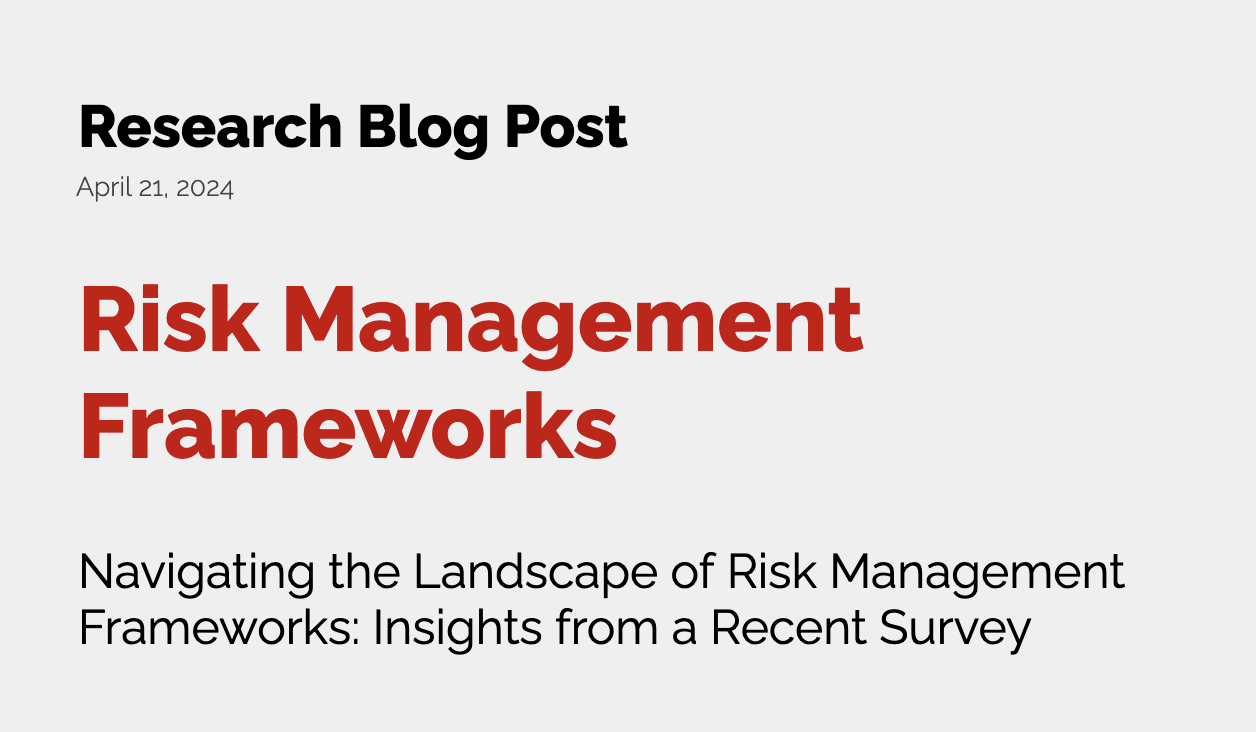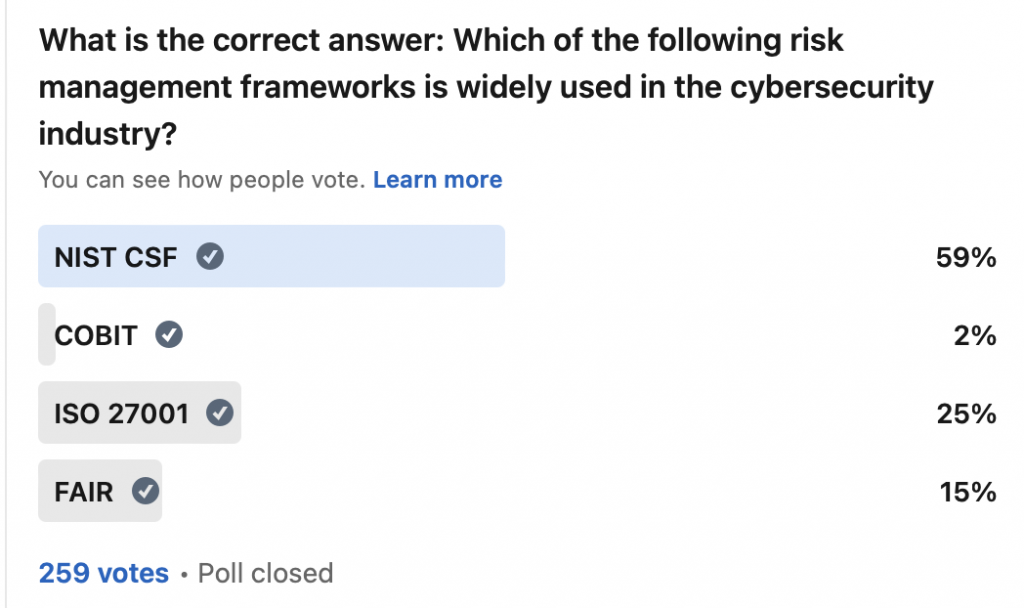
In the realm of information security, the quest to effectively manage risk is paramount. However, amidst the myriad of frameworks available, distinguishing between those explicitly designed for risk management and those that serve as broader guidelines can be a daunting task. A recent survey conducted over a 24-hour period on April 20-21, 2024, offers illuminating insights into the landscape of risk management frameworks, shedding light on prevalent practices and perceptions within the industry. Following is an image showing the results of this survey:
Despite the survey question’s slight ambiguity, the responses gleaned from 259 votes and 5591 impressions on LinkedIn provide valuable glimpses into the strategies employed by information security teams. It becomes evident that a multitude of frameworks are being utilized, even ones not originally intended as strict “risk management frameworks”.
Towering above the rest in popularity is the NIST Cybersecurity Framework (NIST CSF), a stalwart in the field renowned for its comprehensive approach to cybersecurity. Originating from an initiative aimed at safeguarding critical infrastructure, NIST CSF has transcended its initial scope to emerge as a go-to resource for managing cybersecurity risk across diverse organizational landscapes.
When probed further about why individuals perceive NIST CSF as a risk management framework, one respondent succinctly encapsulated the sentiment: “The goal of CSF and pretty much any control framework is to manage and reduce risk.” Indeed, the preface of NIST CSF explicitly states its purpose as assisting organizations in managing and mitigating cybersecurity risks, underscoring its relevance in the risk management arena.
However, it’s important to acknowledge dissenting voices within the survey responses. While many recognize NIST CSF as a formidable tool for risk management, others contend that it falls short of being a dedicated risk management framework. Instead, frameworks such as ISO/IEC 27005:2022 and NIST SP800-30 are hailed as the true champions of risk management, offering more specialized approaches tailored to the intricacies of risk assessment and mitigation.
Moreover, respondents highlight the need to delineate between distinct categories of frameworks, including:
- Security Program Management such as NIST CSF
- Risk Management such as NIST RMF
- Control Frameworks (such as NIST 800-53)
This clarification is essential in preventing confusion and ensuring that organizations select the most appropriate framework for their specific needs.
Further complexity arises with the mention of FAIR (Factor Analysis of Information Risk), heralded as a risk assessment methodology rather than a traditional risk management framework. While some dismiss FAIR due to its perceived lack of widespread adoption, others emphasize its value in providing a structured approach to assessing and quantifying information risk.
In conclusion, the survey findings underscore the nuanced landscape of risk management frameworks, characterized by a diversity of approaches and perspectives. While NIST CSF reigns supreme in popularity and utility, it’s essential for organizations to critically evaluate their needs and objectives before selecting a framework (especially when it comes to SEC breach notification/reporting on Form 8K). By fostering a deeper understanding of the distinctions between various frameworks and methodologies, information security teams can navigate the complex terrain of risk management with confidence and clarity.
